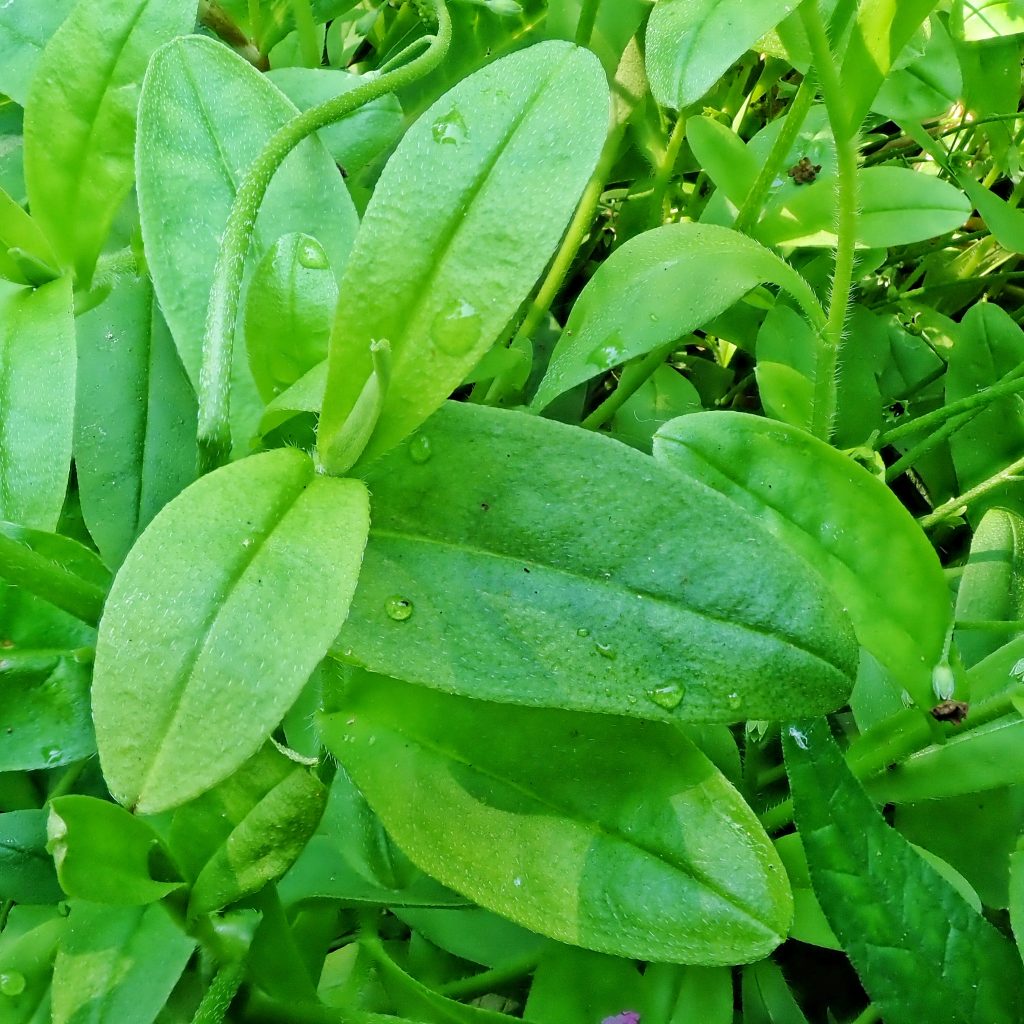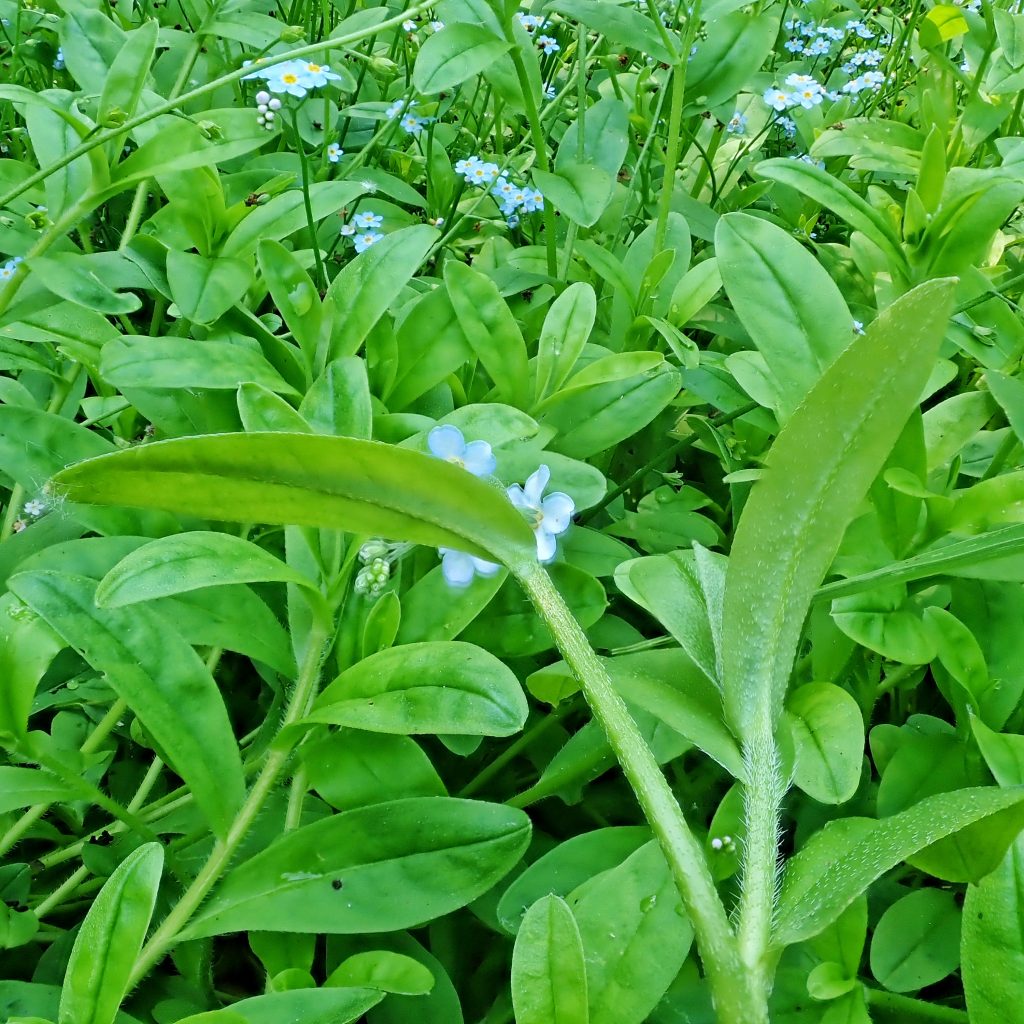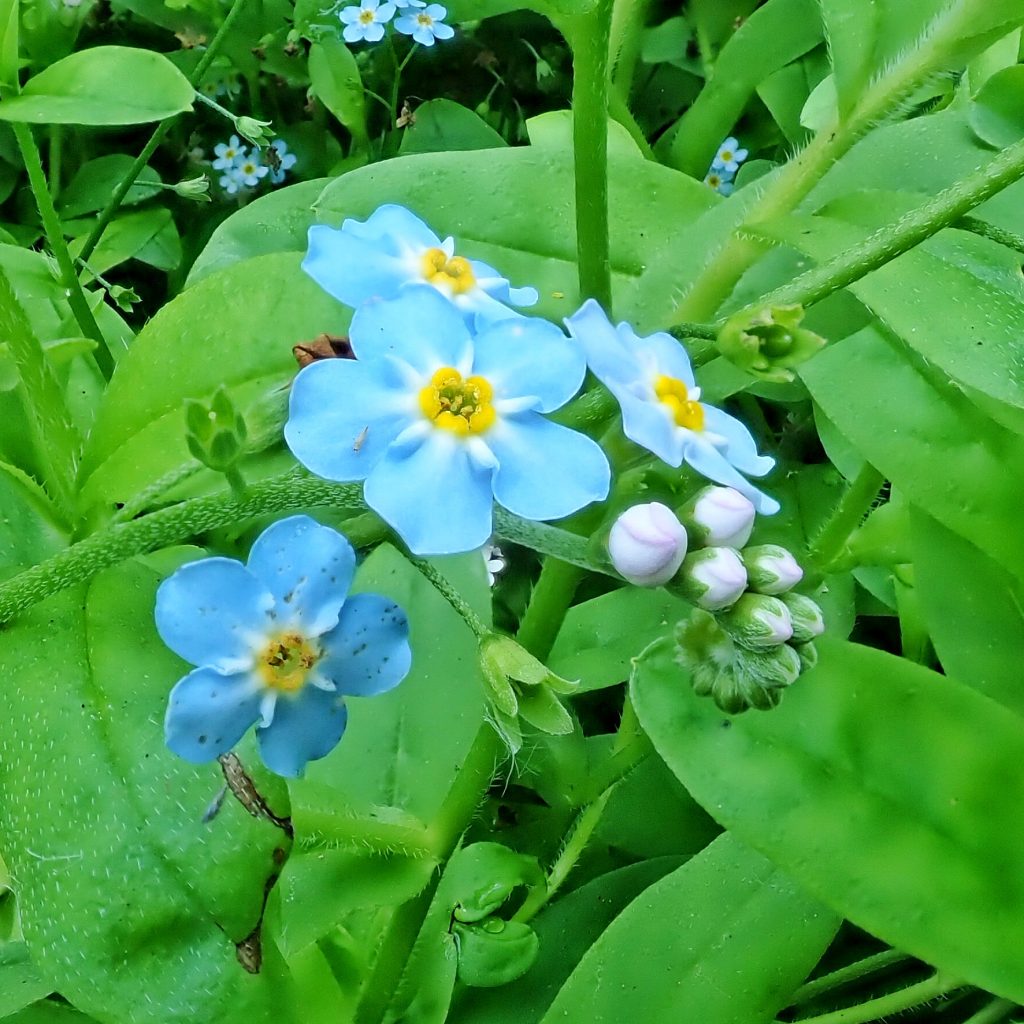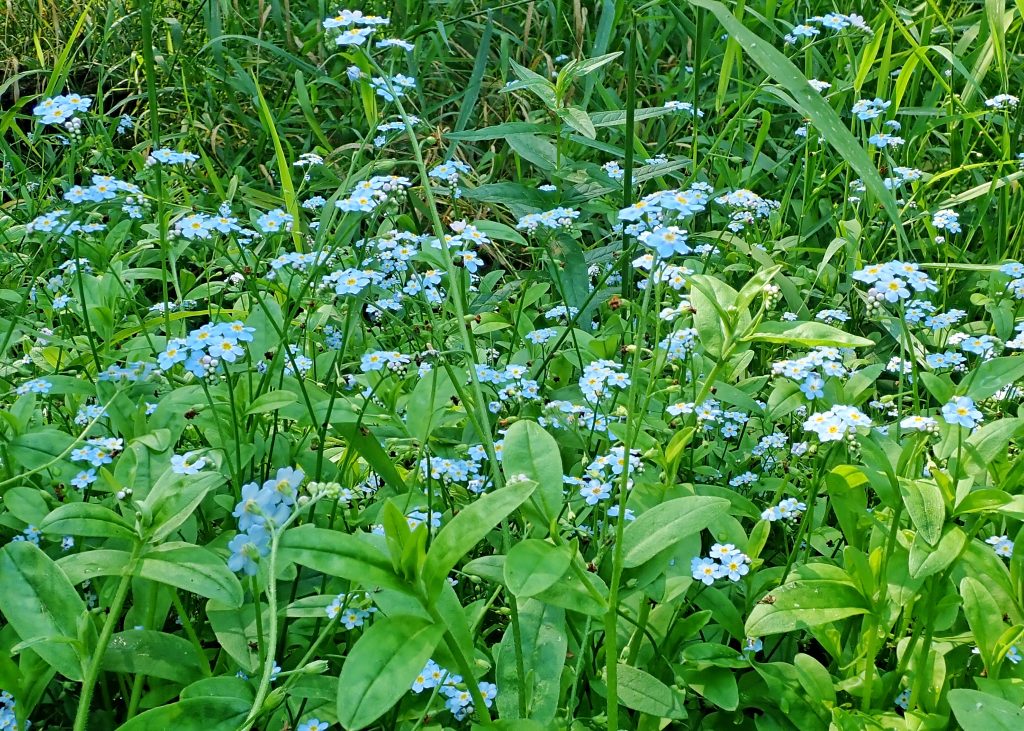
Though this is a European species which has escaped cultivation and has become widely naturalized and even invasive in our region in damp, disturbed ground and wetlands, they are very pretty little plants, and I must confess they delight me when I come across them. It is a perennial with rhizomes and stolons, and often forms colonies which present as clumps up to 18” tall. It has sessile (lacking a stalk or petiole), oval leaves with an obvious central vein. The leaves are relatively hairless on top, while the underside of the leaves and the stem are hairy.

A fairly straightforward identification feature, although only visible with a hand lens, is that the calyx is strigose, meaning it has straight, flattened hairs that all point in the same direction. This characteristic differentiates it from the very similar Myosotis sylvattica, whose calyx has loose, omnidirectional, suberect hairs, with hooked tips (uncinate). The flowers, which bloom all summer long, are blue with a yellow center, and are 6-10mm wide, which separates this species from the other common forget-me-not with a strigose calyx, the native species M. laxa, whose flowers are 2-5mm wide.


Though slugs, snails, and some aphids are known to feed on this plant, and small pollinators may nectar here, there doesn’t seem to be many insects which really utilize this plant.
The genus name myosotis comes from Greek words meaning ‘mouse ears’ due to the leaf shape of some plants in this genus. The species epithet scorpioides means scorpionlike, and refers to the flower cluster, which resembles a coiled scorpion’s tail, and blooms from the top down.

Myosotis scorpioides | Marsh Forget-me-not | Wildflowers of the Pacific Northwest
https://www.illinoiswildflowers.info/weeds/plants/forget_not.html
Size- Up to 18” tall
Habitat- Vernally damp, disturbed ground and wetlands
Range- Region wide in appropriate habitat. Non-native
Blooms- All summer

